Essence, Energy, and Positive Mimesis
In much of Christian anthropology, one talks about the effects of imitation on culture, government, and society as a whole. Imitation is certainly intrinsic in human nature and its role in the development of human society is undeniable. But what kind of imitation is beneficial and what is not? Or more precisely, what is “good” and what is not? This question has been the subject of intense speculation among intellectuals of all eras.
Most recently, Richard Dawkins and his “New Atheist” followers often define the role of positive imitation as a dialectical working out of that which is beneficial for the smooth functioning of the species–a Darwinian method. However, this process fails to account for the metaphysics behind the prevailing morals of a particular society and is too arbitrary in its attempt to explain the anthropological trajectory of mankind, particularly with respect to violence, as René Girard noted.1
More importantly, in the atheist empiricist landscape, the human person is reduced to a set of atoms and molecules, trivializing the very premise of morality.
Likewise, Aristotle and Plato’s notion of imitation fails to account for the value of personhood while lacking the self-reflection needed to justify positive imitation as anything beyond mere culture. In Aristotle, ideas abound but the human person diminishes. It has to be said that Girard alone is able to establish a theory of positive and negative mimesis with the criterion of violence, deceit, and rivalry. Positive mimesis is that which does not fall into an escalating rivalry ultimately leading to a scapegoat.
But this concept of mimesis is too reductionist–too simplistic to cover the grander scheme of things–which Girard himself had admitted. Perhaps a greater explanation of what guides us towards good and bad role models, and what exactly is occurring in the act of imitation, is to be found elsewhere, past the exclusive domains of anthropology and in the boundaries between humanity and the divine. As the incompleteness within Dawkins and Plato reveals, our basis for good and bad imitation must transcend both abstractions and empiricism; we must enter God.
On God, John of Damascus writes:
…the Deity is simple and has one simple energy, good and energizing in all things, just as the sun’s ray, which warms all things and energizes in each in harmony with its natural aptitude and receptive power, having obtained this form of energy from God, its Maker.2
There’s an interesting concept put forward by the early church fathers that is echoed by Larchet below, namely the essence-energies distinction:
Capable of being known indirectly in the contemplation of the logoi of the creation which manifest him, God can also be known directly (but according to a superior mode which goes beyond all cognition and without his essence being accessible) by the faithful who is elevated to the sphere of theologia, by the “realities which are around the essence,” otherwise called the divine energies. These correspond to the attributes of God, to the divine properties, inasmuch as they are manifested or are participated, or to the divine logoi (considered at their source) or to the “invisible realities” of God (cf. Rom. 1.20), or to the divine life, or to the glory of God.
–Jean-Claude Larchet3
To grasp this concept further we have to read what the apostle Peter wrote in one of his letters.
His divine power has given to us all things that pertain to life and godliness, through the knowledge of Him who called us by glory and virtue, by which have been given to us exceedingly great and precious promises, that through these you may be partakers of the divine nature, having escaped the corruption that is in the world through lust.
—2 Peter 1:3-4 (New King James Version)
On this passage, Vladimir Lossky writes: “The words of St. Peter are explicit: partakers of the divine nature. They leave us in no doubt as to the reality of the union with God which is promised us, and set before us as our final end, the blessedness of the age to come. It would be childish, not to say impious, to see in these words only a rhetorical expression or metaphor.”4
There are various ways by which we can grasp how the energies of God manifest in creation. The apostle John, for example, said that “God is love” (1 John 4:8). Paul then proceeds to dive deeper into what “love” is by saying that it is patient, kind, and does not envy (1 Corinthians 13:4). We can quite clearly observe throughout these texts that there is a particular outcome from partaking of God’s energy, and that outcome more or less imitates the self-sacrifice of Jesus at Calvary.
There is quite a lot of evidence in Scripture that imitation is one of the key ways by which we can tap into God’s energies. Paul says to the Corinthian church, “Imitate me, just as I imitate Christ” (1 Corinthians 11:1). Maximus the Confessor expands on Paul’s teachings:
God has created us in order that we may become partakers of the divine nature, in order that we may enter into eternity, and that we may appear like unto Him, being deified by that grace out of which all things that exist have come, and which brings into existence everything that before had no existence.5
This concept is very similar, though not identical, to the idea of the Tao and Qi as preached by Lao Tzu who came much closer than Heraclitus in identifying the Logos but nevertheless conceded that he could not “know its name.” Likewise, many others in ancient times around the world could sense the presence of the divine becoming manifest in creation; these sages yearned to see the One who continued to remain a mystery. In the text Christ the Eternal Tao, we find this proclamation:
Before the Word came into the world
The sages sought Him out in every place.
They saw Him not, but sensed His presence
everywhere.
They found Him in living beings, in mountain crags and
flowing streams, in seas and winds.
He was not these things, guiding them.
But He spoke in these things, guiding them.
All things followed His Course.
Therefore the sages called Him also by His other name:
The Way (Tao),
The Course that all things are to follow.6
The Christian revelation fulfills Lao Tzu by ascribing personhood to that unknowable essence of the Creator. It concludes that the energies of God remain proper to the three persons of the Trinity and that Jesus’ appropriation of human nature bridges humanity to God not in any abstract way but in a real concrete manner which allows us, in anthropological terms, to have a relationship with Him. This elevates our uniqueness, that which is proper to our personhood, in our abiding and ascension in Him.
Imitation certainly plays a big role in this partaking of God’s nature, but the concept of imitation may itself prove to be just the tip of the enormous mountain. There is almost a magnetic attraction to God’s energy. In his study of lodestones, English scientist William Gilbert said that their magnetic force “imitates a soul.”7 Indeed, magnetic forces may hint at the strong persuasive energy of God which, forgoing compulsion, calls us towards Him.
Sadly, just as many have yearned to be with the One, many have resisted the Creator at every turn, and our world system is itself built on that resistance. Therefore, it is no surprise that coercion is at the heart of much of mankind’s desire to establish order in this world. In his attempt to establish order and pursue goodness outside of God’s energies, the human person loses his personality and is remade into a creature of necessity.
The beauty and grace of God, on the other hand, provides for synergy. Human beings do not lose their freedom and personhood in their attraction towards God. We are not pulled towards the Creator out of necessity and against our will. In this way, the attraction of God surpasses even the created concepts of imitation and magnetism. Rather the Creator, as exemplified in Jesus’ crucifixion, invites us to voluntarily partake of the peace and harmony that exists within the divine Triad.
This would indicate the way man must establish the true diversity and peace that he longs for and that which he strives to achieve through violence and coercion.
Men, women and children, profoundly divided as to race, nation, language, manner of life, work, knowledge, honour, fortune… the Church recreates all of them in the Spirit. To all equally she communicates a divine aspect. All receive from her a unique nature which cannot be broken asunder, a nature which no longer permits one henceforth to take into consideration the many and profound differences which are their lot. In that way all are raised up and united in a manner which is truly catholic. In her none is in the least degree separated from the community, all are grounded, so to speak, in one another by the simple and indivisible power of faith… Christ, too, is all in all, He who contains all in Himself according to the unique, infinite and all-wise power of His goodness–as a centre upon which all lines converge–that the creatures of the one God may not live as strangers or enemies one with another, having no place in common, where they may display their love and their peace.8
—Maximus the Confessor
Nationalities, race, political affiliation, and ideologies, all that demote the personhood of man, become trivial within the outward extension on the perichoresis–the “divine dance”–of the Triad which transforms humanity into the likeness of God. As we have already noticed, this partaking of the divine nature involves a magnetic charm–an irresistible beauty–that emanates from God and produces peace and love for our neighbors. Of those who would partake in God’s nature, Isaac the Syrian says, “If they were cast into the fire ten times a day for the sake of their love for mankind, even this would seem to them too little.”9
1. Girard, Evolution and Conversion.
2. John Damascene, An Exact Exposition of The Christian Faith.
3. Larchet, St Maximus the Confessor on Essence, Energies, and Logoi.
4. Vladimir Lossky, The Mystical Theology of the Eastern Church.
5. Maximus the Confessor, Epistle 43 to John Cubicularium. (Emphasis mine)
6. Hieromonk Damascene, Christ the Eternal Tao.
7. https://www.quantamagazine.org/the-hidden-magnetic-universe-begins-to-come-into-view-20200702/
8. Maximus the Confessor, Mystagogy I.
9. Quoted by Vladimir Lossky, The Mystical Theology of the Eastern Church.

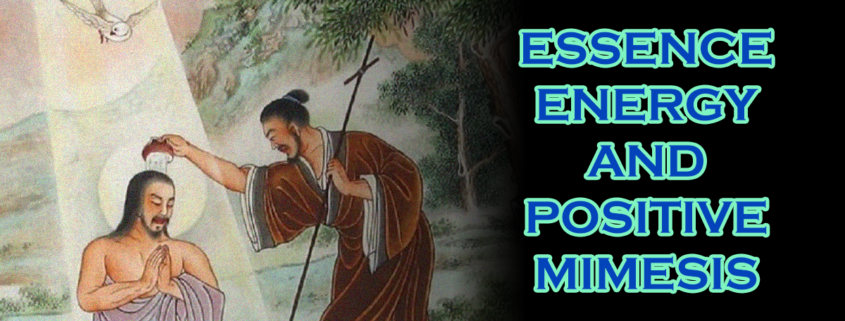
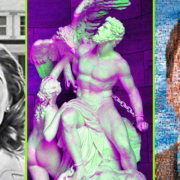

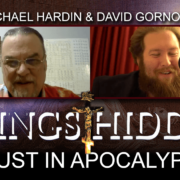


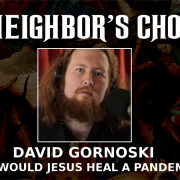

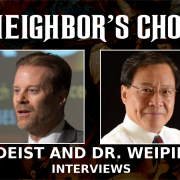
Leave a Reply
Want to join the discussion?Feel free to contribute!